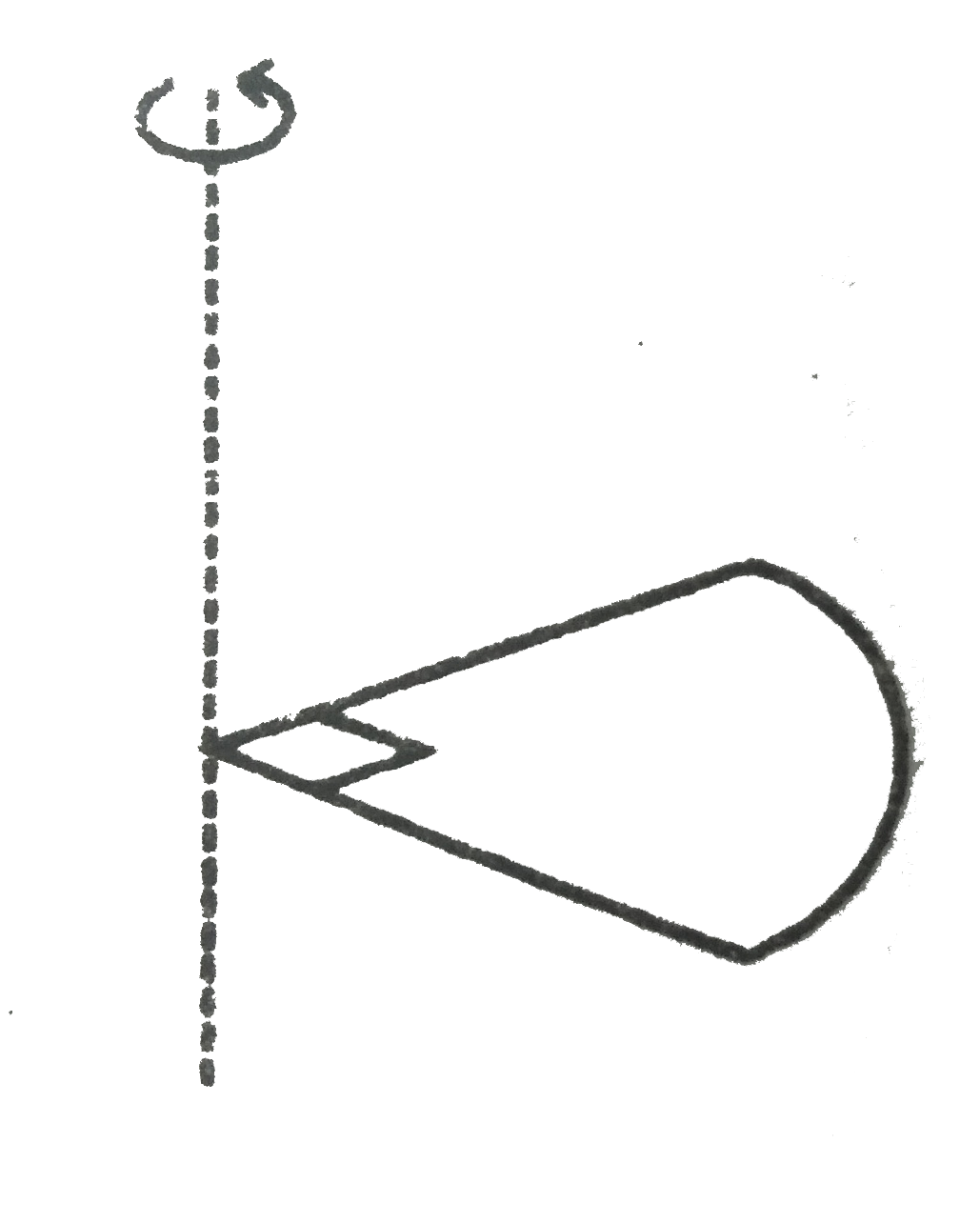A flywheel is in the form of a uniform circular disc of radius 1m and mass 2kg. The work which must be done on it to increase its frequency of rotation from 5 to 10rev/s is approximately
1.5×102J
3.0×102J
1.5×103J
3.0×103J
The correct Answer is:C
To solve the problem of finding the work done on a flywheel to increase its frequency of rotation from 5 to 10 revolutions per second, we can follow these steps:
Step 1: Calculate the Moment of Inertia (I)
The moment of inertia I for a uniform circular disc is given by the formula:
I=12mr2
Where:
- m=2kg (mass of the disc)
- r=1m (radius of the disc)
Substituting the values:
I=12×2×(12)=12×2×1=1kg m2
Step 2: Convert Frequencies to Angular Velocities
The initial frequency fi=5rev/s can be converted to angular velocity ωi using the formula:
ωi=2πfi
Calculating ωi:
ωi=2π×5=10πrad/s
The final frequency ff=10rev/s can be converted to angular velocity ωf:
ωf=2πff
Calculating ωf:
ωf=2π×10=20πrad/s
Step 3: Calculate the Change in Rotational Kinetic Energy
The work done on the flywheel is equal to the change in its rotational kinetic energy, which is given by:
W=ΔKE=12Iω2f−12Iω2i
Substituting the values of I, ωf, and ωi:
W=12×1×(20π)2−12×1×(10π)2
Calculating each term:
W=12×1×(400π2)−12×1×(100π2)
W=200π2−50π2=150π2
Step 4: Calculate the Numerical Value of Work Done
Using π≈3.14:
W≈150×(3.142)≈150×9.86≈1479J
Step 5: Round the Result
Rounding 1479J gives approximately:
W≈1.48×103J
Conclusion
The work done to increase the frequency of rotation from 5 to 10 rev/s is approximately:
1.5×103J
The moment of inertia I for a uniform circular disc is given by the formula:
I=12mr2
Where:
- m=2kg (mass of the disc)
- r=1m (radius of the disc)
I=12×2×(12)=12×2×1=1kg m2
The initial frequency fi=5rev/s can be converted to angular velocity ωi using the formula:
ωi=2πfi
Calculating ωi:
ωi=2π×5=10πrad/s
ωf=2πff
Calculating ωf:
ωf=2π×10=20πrad/s
The work done on the flywheel is equal to the change in its rotational kinetic energy, which is given by:
W=ΔKE=12Iω2f−12Iω2i
Substituting the values of I, ωf, and ωi:
W=12×1×(20π)2−12×1×(10π)2
W=12×1×(400π2)−12×1×(100π2)
W=200π2−50π2=150π2
Using π≈3.14:
W≈150×(3.142)≈150×9.86≈1479J
Rounding 1479J gives approximately:
W≈1.48×103J
The work done to increase the frequency of rotation from 5 to 10 rev/s is approximately:
1.5×103J
Topper's Solved these Questions
- BOOK - DC PANDEY ENGLISHCHAPTER - ROTATIONEXERCISE - (B) Chapter Exercises25videos
ROTATION
- BOOK - DC PANDEY ENGLISHCHAPTER - ROTATIONEXERCISE - (C) Chapter Exercises39videos
ROTATION
- BOOK - DC PANDEY ENGLISHCHAPTER - ROTATIONEXERCISE - Check point 9.315videos
ROTATION
- BOOK - DC PANDEY ENGLISHCHAPTER - RAY OPTICSEXERCISE - Integer type q.14videos
RAY OPTICS
- BOOK - DC PANDEY ENGLISHCHAPTER - ROTATIONAL MECHANICSEXERCISE - Subjective Questions2videos
ROTATIONAL MECHANICS
Similar Questions
Knowledge Check
- Question 1 - Select One
One quarter sector is cut from a uniform circular disc of radius R. The sector has mass M. IT is made to rotate about a line perpendicular to its plane and passing through the centre of the original disc. Its moment of inertia about the axis of rotation is
AMR2/2BMR2/4CMR2/8D√2MR2
A body of mass 1 kg is rotated in a horizontal circle of radius 1 m and moves with velocity 2ms−1 The work done in 10 revolutions is
View SolutionA particle of mass 1kg is placed at a distance of 4m from the centre and on the axis of a uniform ring mass 5kg and radius 3m. The work done to increase the distance of the particle from 4m to 3√3m is
View SolutionA grind-stone is in the form of a solid cylinder has a radius of 0.5 m and a mass 50 kg. What torque will bring it from rest to an angular velocity of 300 rev/min in 10 s ? What is the kinetic energy when it is rotating at 300 rev/min ?
View SolutionOne quarter sector is cut from a uniform circular disc of radius R. This sector has mass M. It is made to rotate about a line perpendicular to its plane and passing through the centre of the original disc. It moment of inertia about the axis of rotation is.
 .View Solution
.View SolutionA particle of mass 100 g is kept on the surface of a uniform sphere of mass 10 kg and radius 10 cm. Find the work to be done against the gravitational force between them to take the particle away from the sphere.
View SolutionA circular disc of mass 2 kg and radius 10 cm rolls without slipping with a speed 2 m/s. The total kinetic energy of disc is
View SolutionA particle of mass 1kg is kept on the surface of a uniform sphere of mass 20kg and radius 1.0m. Find the work to be done against the gravitational force between them to take the particle away from the sphere.
View Solution

